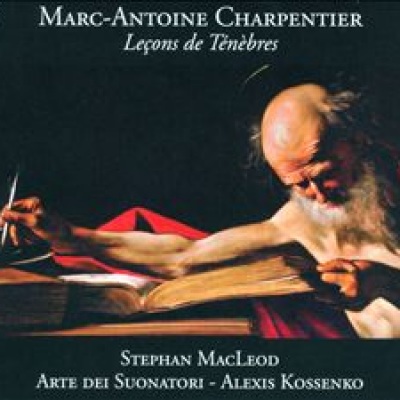
Marc-Antoine Charpentier: Leçons de Ténèbres
review[-]by Stephen Eddins The performances on this lovely album of vocal and instrumental music by Marc-Antoine Charpentier make it a recording that should delight the composer's fans and anyone who loves the music of the Baroque. Listeners should be warned that the packaging and even the composer's titles create expectations of music of a very different character from what is actually presented. The three Leçons de Ténèbres of the title, scored for bass and chamber orchestra, refer to baleful texts taken from the Lamentations of Jeremiah describing the fall and abasement of Jerusalem, and were written for services on Wednesday, Thursday, and Friday of Holy Week, the darkest days in the Christian liturgical calendar. Rather than emphasizing the texts' dire pronouncements of God's wrath, Charpentier's music expresses a gentle compassion for Jerusalem in music that's comfortingly benevolent, full of light rather than darkness. It's a brilliantly counterintuitive but legitimate take on the meaning of the texts. Charpentier was certainly capable expressing profound grief and wrote some of the most wrenching, anguished music of his era, but here he offers a message of hope and reassurance in the darkest season of the Church year. Much of the other music included in the album, all written for liturgical use, is also essentially positive, in major keys and with perky tempos. It complements the tone of the Leçons de Ténèbres, but hardly fulfills the expectations of the album's packaging, which features Caravaggio's dark painting of an emaciated St. Jerome next to a skull. Bass Stephan Macleod is resonant, agile, and warmly expressive in the Leçons and in a very odd unaccompanied motet, Pour plusieurs martyrs, whose music is hardly as somber as its title would imply. Alexis Kossenko, best known as a transverse flute virtuoso, leads the Polish Baroque chamber orchestra Arte dei Suonatori in supple, beautifully nuanced performances. The orchestral sound is sweet and mellow, thanks in part to the prominent use of recorders and transverse flutes and the warm but focused string tone. The sound is clean and present with an expansive cathedral-like ambience, marred only by too-close miking of the winds, which makes gulping intakes of air distractingly prominent.
